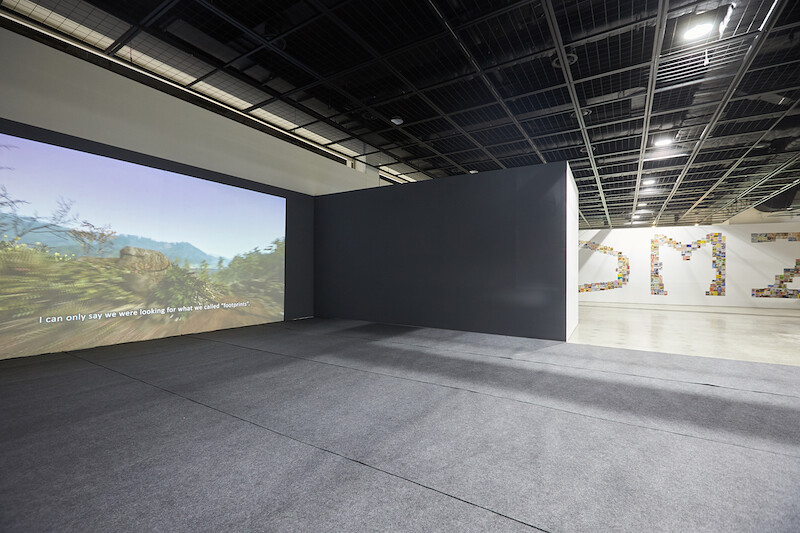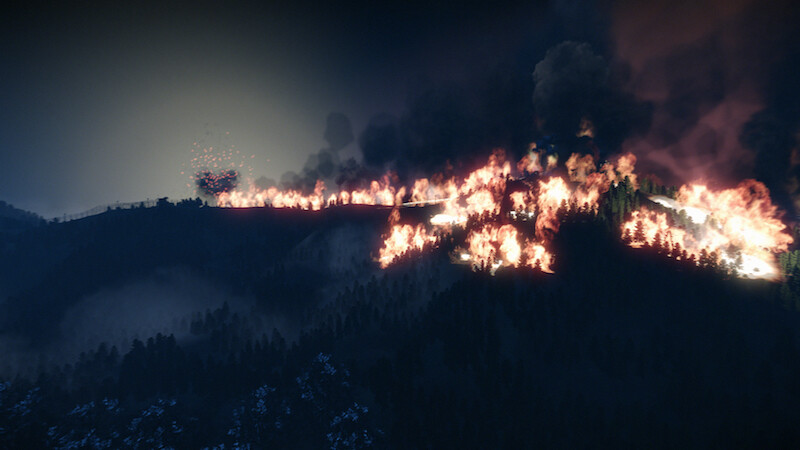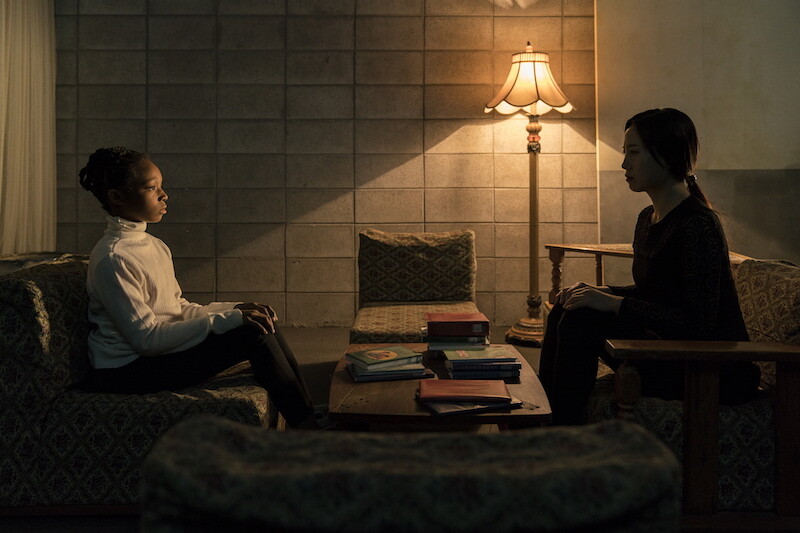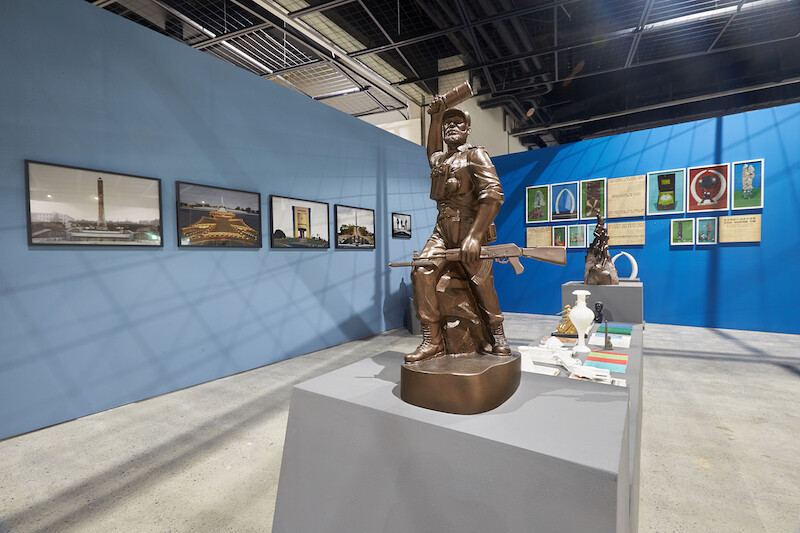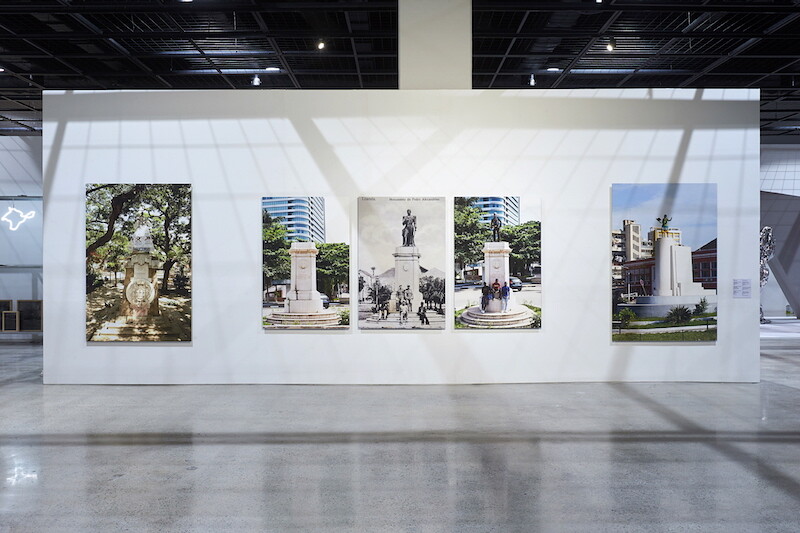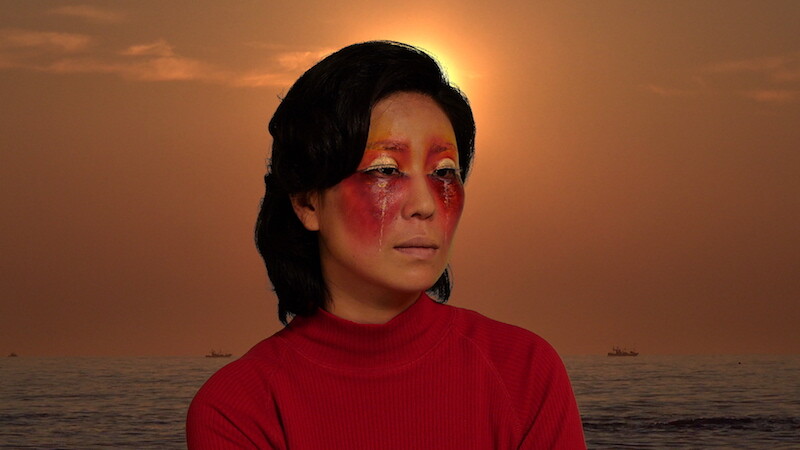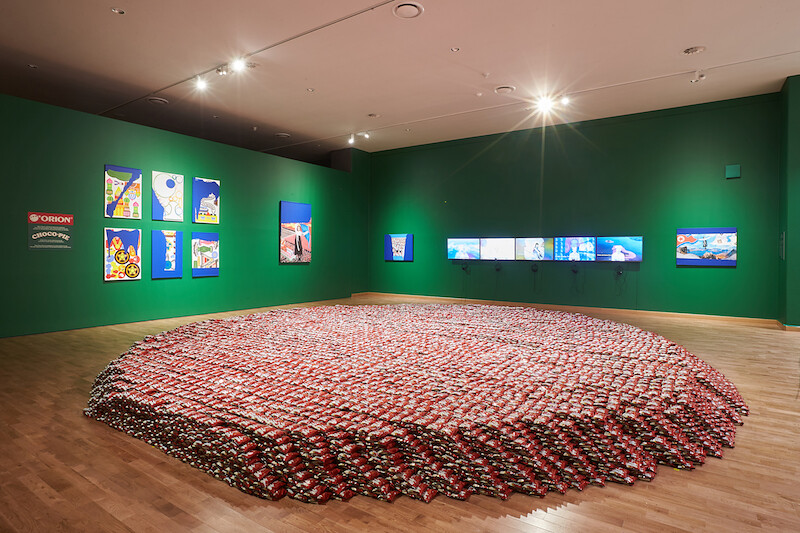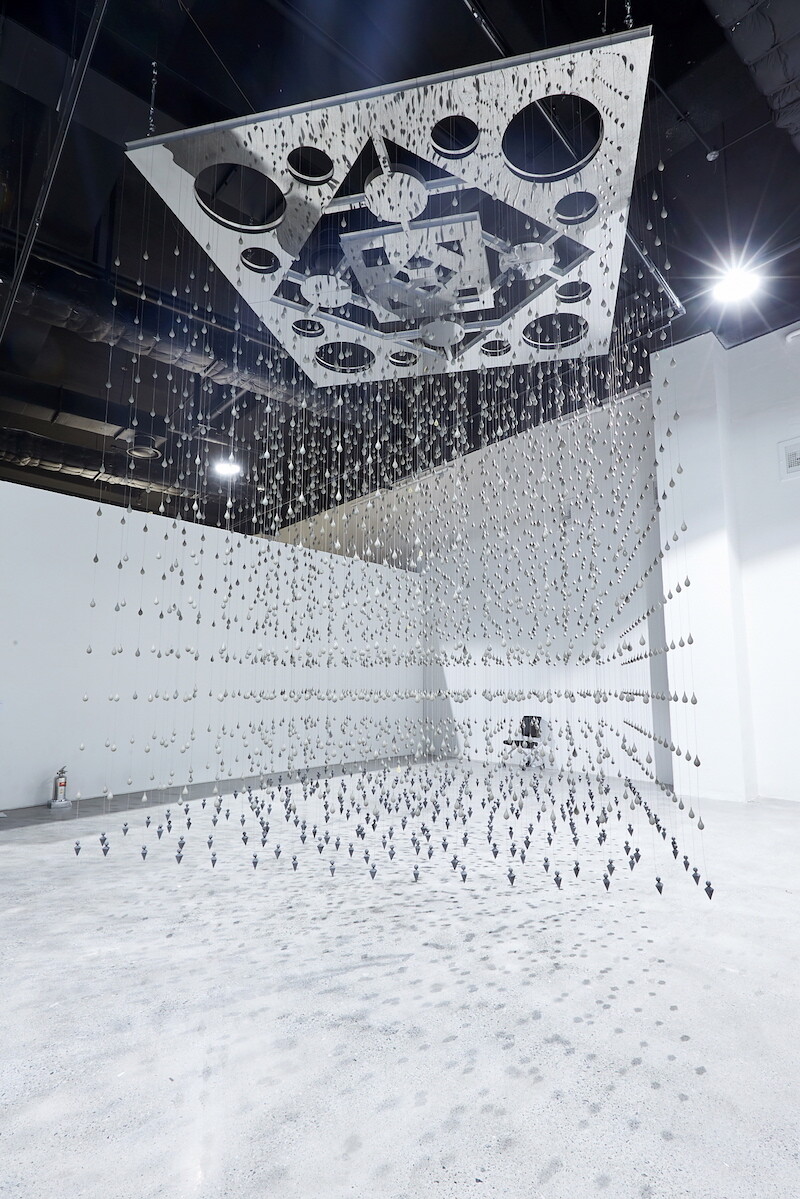“Divided We Stand,” the 9th Busan Biennale, opened over the same weekend as the 70th anniversary celebration of the founding of the Democratic People’s Republic of Korea, which split the peninsula in 1948 and precipitated the Korean War. On TV, with limited English-language options, CNN International played a rotating news package which contrasted Kim Jong-un’s notably missile-less parade celebration with “the latest bombshells from the White House.” State-restricted coverage of the Arirang Mass Games in Pyongyang, flashed between segments on far-right riots in Germany, and seemingly endless, stale, rhetorical discussions about whether the umpire at the US Open displayed sexism toward Serena Williams in her match against Naomi Osaka. “Divided we stand” is certainly a popular way to describe the zeitgeist.
In Busan, the biennial (curated by a committee led by artistic director, Cristina Ricupero, curator Jörg Heiser, and guest curator Gahee Park) gathers works by South Korean and international artists who address the theme of split territories, with reference to various international separations—physical, ideological, and psychological. The triumph of the presentation is the way in which the exhibition, led by two Europeans, highlights a considered selection of work by South Korean artists who exhibit internationally but are lesser-known on such world stages—and allows those artists to not only stand out but also captivate in an exhibition otherwise populated largely with (what I hate to term) biennial mainstays. This stellar representation of South Korean artists is contrasted at points by the way in which the myriad events of the postwar era and their specificities, addressed by a very international list of artists, were subject to a sort of CNN-like flattening under the weight of a heavy, declarative, thematic umbrella. Put simply, by not drawing out the differences between these events—through the works’ placement or through wall labels—the biennial ended up equating many different conflicts and players within those struggles.
The exhibition is manageable in scale, spanning two venues: the Museum of Contemporary Art and the Former Bank of Korea. Unlike other, larger biennials, it does not give in to spectacle by overwhelming its viewers with lots of giant sculptures and public commissions, or so much time-based media that it would be impossible to take it all in. In addressing the theme of split territories and their ramifications over a long historical time period and wide geographic reach, it was, in particular, the works which were scaled down to poetic, first-person accounts which stood out. Amar Kanwar’s video A Season Divided (1997), on the legacy of the 1947 Partition of India and Pakistan by the British, pairs footage of military rituals, protests, and landscapes with a literary voiceover about this history and its impact on his own family. Another example is 489 Years (2016) by Kwon Hayoun, based on a South Korean soldier’s story of entering the four-kilometer-wide strip of the DMZ, which she illustrated with footage of the area created through virtual reality.
The biennial traces such Cold War topics with emphasis on the division between North and South Korea; decolonization periods throughout Africa; and the creation, fall, and legacy of the Berlin Wall and Iron Curtain in its overarching narrative, which goes up to and includes events of the last five years. It then concludes with works which speculate on a mostly dystopian future. The most successful moments in the exhibition occur when artworks make links between events across time or space, bringing to light lesser-known histories and interconnections. Onejoon Che’s brilliant video My Utopia (2018) links North Korea to Equatorial Guinea (and East Germany) through a dramatic retelling of one woman’s true story from various perspectives. Monique Macías is the daughter of Francisco Macías Nguema, the first Prime Minister of Equatorial Guinea, who sent her to live in North Korea as a small child, right before he was executed following a military coup in 1979. Equatorial Guinea had signed a treaty with North Korea years earlier, and Kim Il-sung, the first Supreme Leader of North Korea, adopted Macías and her siblings. Che cast actors to play “Mo-ni-ca,” (as her name is pronounced in the work), both as a child and as an adult (this is according to the guidebook: the actor playing adult Monica looks eerily similar to the real Macías), to give a first-person account of her life growing up in Pyongyang, along with stories from other actors playing North Korean figures in her life, and one European actor playing an East German fluent in Korean, who befriended Macías while on a communist exchange. They switch between languages and modes of address, as footage shot in two stage sets is interwoven with documentary material showing the real Macías in North Korea, where she is both illustrious and alienated for her physical difference and unique status. The video was so engrossing in its quick pace and mode of storytelling that it would have been worth the 20-hour trek to Busan on its own.
Che has another work on view, International Friendship (2017–18), an installation of documentation, ephemera, photos, and 3D-printed objects referring to an eponymous exhibition of gifts from world leaders to Kim Jong-un’s father and predecessor, Kim Jong-il, and his father Kim Il-sung. The work underscores Kim Il-sung’s effort to make alliances, particularly in African countries where the balance of power was teetering wildly. It is installed next to a wall of photos by Kiluanji Kia Henda, from his “Homem Novo” [New Man] series (2010–ongoing), which has been exhibited in several international exhibitions, depicting pedestals where monuments were razed in the process of decolonization in his hometown of Luanda, Angola.
This pairing of Che and Kia Henda is one of few instances when the placement of the works creates discernible relationships and tensions, which seemed subordinate to the goal of tracing an overarching, loosely chronological narrative from the Cold War into the future. The exhibition misses opportunities to draw out meaningful comparisons and contrasts between the works—it lacks a means by way of proximity, installation, or wall labels, of drawing out the differences between all the experiences of split territories it displays and thus ends up equating them. It’s difficult to contain works about the feeling of being caught in enemy cross hairs (as described in Kwon’s 489 Years) with the problems of German reunification addressed by Hito Steyerl’s video essay Die leere Mitte [The Empty Center] (1998) placed right next to it. Both are fascinating works, but have little to do with one another. Linked by proximity plus the theme of “divided we stand,” it is an equation that doesn’t add up to so much.
In general, the latest Busan Biennial is a superlative highlight of South Korean artists (like Minouk Lim, Kelvin Kyungkun Park, Mina Cheon, and Minwee Lee and Yun Choi, in addition to artists mentioned above) told through an international perspective. That international perspective, however, breaks down as the subject of the exhibition—split territories and their consequences—varies greatly across the globe as well as in accordance to one’s status within a given society. It felt disingenuous to use a tote bag emblazoned with the exhibition title to carry my well-worn Canadian passport back to a relatively peaceful and predictable part of the world. These differences are best explored in works that offer person-to-person, human perspectives, and call into question who are the “we” in the exhibition’s title. But this approach of gathering and flattening international work under heavy political sloganeering has become a common trope—almost a normative criteria for assessing an international exhibition’s relevance in recent years: that it is good to the extent by which it uses a political theme that addresses “urgent” issues; and that it does so through an outmoded, “The Family of Man”-style collective and undifferentiated identification. Shouldn’t we rather remain skeptical of contemporary art’s role as a means of cultural diplomacy, especially within biennial exhibitions? If the world is in fact as divided as CNN and other corporate cable outlets tell us ad nauseam, why not use these exhibitions to slow down and interrogate that idea? Political change, if that is the goal, will only take place when “we”—curators, artists, writers, et al.—embrace more discomfort and acknowledge that ours is an uneven playing field.
